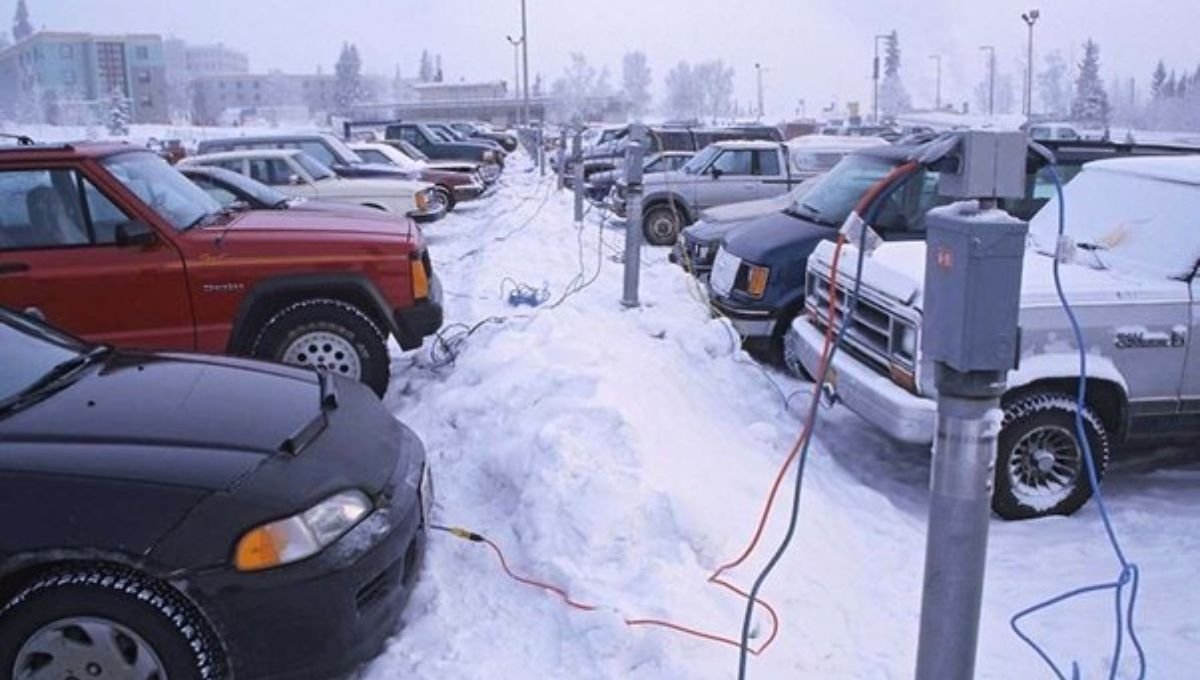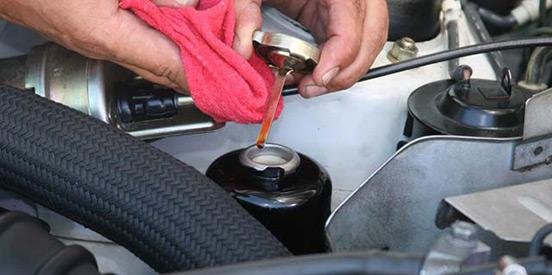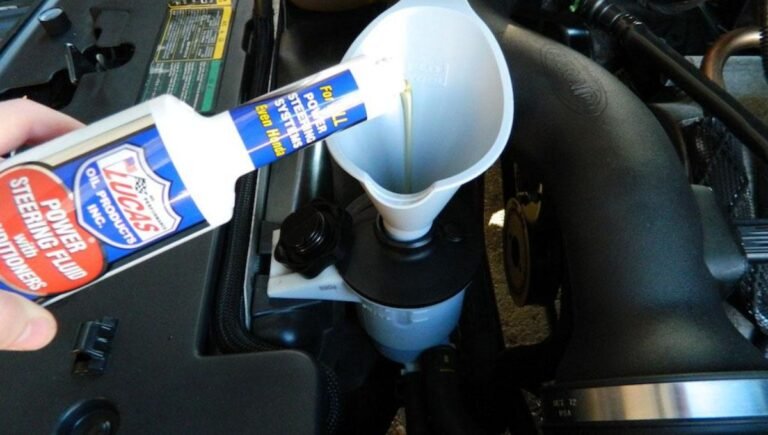Can Cold Weather Affect Power Steering: The Chilling Facts?
Cold weather can affect power steering by causing the fluid to thicken, making steering harder. In regions with frigid temperatures, the power steering fluid in a vehicle can become thicker due to the cold.
This can result in increased resistance when turning the steering wheel, making it harder to maneuver the vehicle. Understanding how cold weather impacts power steering is essential for maintaining optimal vehicle performance during winter months. In this blog post, we will explore the effects of cold weather on power steering systems, provide tips for addressing potential issues, and offer guidance on how to ensure smooth steering functionality in chilly conditions.
Let’s dive in and uncover the impact of cold weather on power steering!
Can Cold Weather Affect Your Power Steering?
Yes, cold weather can affect your power steering.
Here are some common issues you might encounter:
- Thickened Fluid: Power steering fluid can become thicker in cold temperatures, making it harder for the fluid to flow through the system. This can result in stiff or sluggish steering until the fluid warms up.
- Increased Wear: Cold weather can cause seals and hoses in the power steering system to contract, potentially leading to leaks or increased wear over time.
- Pump Strain: The power steering pump may have to work harder to move the thicker fluid, which can strain the pump and lead to premature failure if not addressed.
- Noisy Steering: You might hear whining or groaning noises when you first start your vehicle in cold weather, which can be a sign that the power steering fluid is struggling to circulate properly.
To mitigate these issues, consider using a high-quality power steering fluid that’s rated for low temperatures, and allow your vehicle to warm up for a few minutes before driving. Regular maintenance and fluid checks can also help keep your power steering system functioning well, even in cold weather.
The Link Between Cold Weather And Power Steering Issues

When temperatures drop, it’s not just your body that feels the effects of the cold. Your vehicle’s power steering system can also be impacted, leading to potential issues that may affect your driving experience. Understanding the relationship between cold weather and power steering problems is crucial for maintaining the optimal function of your vehicle.
Temperature Effects On Power Steering Fluid
In cold weather, power steering fluid becomes more viscous, which can lead to decreased fluid flow and cause strain on the system. This can result in sluggish or stiff steering, making it more difficult to maneuver your vehicle, especially at lower speeds or when parking.
Material Contraction And Seals
When exposed to cold temperatures, the materials used in the power steering system, including seals and hoses, may contract. This can lead to potential leaks and compromise the overall integrity of the system, increasing the risk of fluid loss and potential damage to components.
Hydraulic Power Steering Systems In The Cold
Cold weather can indeed affect hydraulic power steering systems. The cold can cause the power steering fluid to thicken, leading to harder steering and potential damage to the system. It’s important to use the recommended fluid for cold weather conditions and to keep the system well-maintained to avoid issues in the cold.
How Cold Affects Hydraulic Fluids
In cold weather, hydraulic power steering systems can experience various issues due to the thickening of the hydraulic fluids. This thickening of fluids is caused by the low temperatures, making the fluids more viscous and difficult to move through the system. The cold weather can also cause the rubber seals to contract, leading to leaks and system failures. These issues can make it difficult to steer the vehicle, and in some cases, the power steering system may fail entirely.
Winter Maintenance Tips For Hydraulic Systems
To prevent issues with hydraulic power steering systems in cold weather, it is essential to perform regular maintenance. This maintenance includes checking the hydraulic fluid levels and ensuring that the fluid is at the correct viscosity for the weather conditions. It is also crucial to inspect the rubber seals and hoses for signs of wear and tear, and replace them if necessary. Additionally, keeping the power steering system clean can prevent debris from accumulating and causing damage to the system.
Here are some winter maintenance tips for hydraulic power steering systems:
- Use the manufacturer’s recommended hydraulic fluid for cold weather.
- Inspect the hoses, belts, and clamps for any signs of wear and tear.
- Check the hydraulic fluid level and top it off if necessary.
- Replace the hydraulic fluid and filter as recommended by the manufacturer.
- Ensure the power steering pump is functioning correctly.
- Keep the power steering system clean to prevent debris from causing damage.
Proper maintenance of hydraulic power steering systems can ensure that they continue to function correctly in cold weather. Regular inspections and maintenance can prevent issues and prolong the life of the system. By following the winter maintenance tips outlined above, you can avoid the inconvenience and expense of power steering failure in cold weather conditions.
Electric Power Steering Challenges During Winter
Cold weather can pose challenges for electric power steering, impacting its performance. The low temperatures can cause the power steering fluid to thicken, leading to increased effort required to turn the wheel. It is important to be aware of these potential issues and take necessary precautions during the winter season.
Symptoms Of Cold-weather Power Steering Problems
Cold weather can have an impact on power steering, leading to symptoms such as stiff steering, noise, or a decrease in power assist. These issues can make driving in cold temperatures more challenging, highlighting the importance of regular maintenance and addressing any power steering problems promptly.
Stiff Steering Wheel
One of the most common symptoms of cold-weather power steering problems is a stiff steering wheel. When temperatures drop, the power steering fluid in your vehicle can thicken, making it difficult for the system to operate smoothly. As a result, you may notice that it requires more effort to turn the steering wheel, especially when starting your car in the morning or after it has been sitting outside in the cold for an extended period of time.
If you experience a stiff steering wheel, it is important not to force it, as this could potentially damage the power steering system. Instead, try turning the wheel gently from side to side to help warm up the fluid and loosen any viscosity caused by the cold weather. If the problem persists or becomes worse, it may be necessary to have your power steering system inspected by a professional mechanic.
Unusual Noises When Turning
Another telltale sign of cold-weather power steering problems is the presence of unusual noises when turning the steering wheel. Cold temperatures can cause the power steering pump to work harder, leading to increased strain and potential issues within the system. This can result in noises such as whining, squealing, or groaning when you turn the wheel.
If you notice any unusual noises while turning, it is advisable to have your power steering system checked as soon as possible. Ignoring these noises can lead to further damage and potentially costly repairs down the line. A professional mechanic will be able to diagnose the exact cause of the noises and recommend the appropriate course of action to resolve the issue.
Cold Start: The Strain On Power Steering Components
In cold weather, power steering components can experience strain, affecting their performance. Cold starts can lead to increased resistance and potential damage to power steering systems, impacting the vehicle’s handling and safety. It’s important to be aware of these effects and take proactive measures to maintain power steering functionality during colder temperatures.
Increased Load On The Pump
When the cold weather sets in, power steering systems experience increased strain on the pump. This is primarily due to the thicker and colder fluid that is present in the system. As the temperature drops, the power steering pump has to work harder to circulate the cold fluid throughout the system, resulting in additional load.
This increased load on the pump can lead to various issues. Firstly, it can cause the pump to operate at higher pressures, putting additional stress on its components. Secondly, the increased workload can cause the pump to generate more heat, which can lead to overheating if not properly managed.
Belt And Pulley Complications
In cold weather conditions, power steering belts and pulleys can also face complications. The low temperatures can cause the belts to stiffen and become less flexible, affecting their ability to grip the pulleys effectively. This can result in slipping or squealing noises when turning the steering wheel, indicating a lack of proper power steering assistance.
Furthermore, cold weather can also lead to belt tension issues. As the belts contract in colder temperatures, they may become loose, affecting their overall performance. Loose belts can cause power steering problems such as reduced assistance, difficulty in steering, or even complete failure in extreme cases.
To prevent these belt and pulley complications, it is crucial to ensure that they are properly inspected and maintained before the onset of cold weather. Regular checks for belt tension, wear, and proper alignment can help prevent any potential issues and ensure smooth power steering operation even in colder temperatures.
Preventive Measures To Protect Power Steering In Winter
When the temperature drops, the power steering system in vehicles can be significantly impacted. However, by taking preventive measures, it’s possible to protect the power steering system during the winter months.
Regular Fluid Checks And Replacement
Regularly checking and replacing power steering fluid is crucial in colder climates. Ensure the fluid meets the manufacturer’s specifications, as it can thicken in cold weather, affecting the system’s performance.
Insulating Power Steering Components
Insulating the power steering components can help maintain proper functioning in cold weather. Using insulating materials such as thermal wraps or tape on hoses and the power steering pump can prevent freezing and enhance performance.
Troubleshooting Power Steering Issues In The Cold
Power steering issues in the cold can be a common problem for drivers. Cold weather can affect power steering by causing the fluid to thicken and the system to work harder. Regular maintenance and using the recommended power steering fluid can help prevent issues.
Diagnosing Common Cold-related Failures
In cold weather, power steering issues can arise due to fluid thickening. The steering wheel might feel stiffer than usual, making turning more challenging.
When To Seek Professional Help
If power steering problems persist in cold weather, seek professional assistance promptly. A qualified mechanic can diagnose and fix underlying issues effectively.
The Science Behind Power Steering And Temperature Variance
Cold weather can impact power steering due to changes in fluid dynamics and material behavior. Let’s delve into the science behind these effects.
Viscosity And Fluid Dynamics
Viscosity is crucial in power steering systems, affecting fluid flow. Cold temperatures increase fluid viscosity, making it harder to flow smoothly.
Material Behavior At Low Temperatures
Power steering components are affected by low temperatures, causing stiffness and decreased efficiency. Rubber seals can harden, leading to leaks.
Real-life Incidents: Cold Weather And Power Steering Failures
In cold weather, power steering failures can occur due to the thickening of power steering fluid, making it harder for the system to function properly. This can lead to difficulties in steering and a decrease in overall vehicle control, posing a potential safety risk.
Regular maintenance and using the recommended type of power steering fluid can help mitigate these issues.
Real-Life Incidents: Cold Weather and Power Steering Failures
Case Studies
In one case, a driver lost control on icy roads due to a power steering failure.
Learning From Past Mistakes
Regular maintenance can prevent power steering issues in cold weather.
Future Innovations In Power Steering For Colder Climates
Power steering in colder climates is a challenge for vehicles. The cold weather causes the power steering fluid to thicken, which makes it difficult for the power steering pump to work efficiently. Future innovations in power steering will focus on developing fluids and pumps that can withstand colder temperatures, ensuring that drivers have smooth and effortless steering even in the coldest weather conditions.
Advancements In Fluid Technology
Modern power steering systems use specially formulated fluids for cold weather.
New fluids maintain performance even in low temperatures.
Design Improvements For Reliability
Manufacturers now focus on robust designs for cold weather operations. Components enhanced to withstand extreme cold conditions.
Here’s a list of frequently asked questions
1. Can Cold Weather Affect My Power Steering?
- Answer: Yes, cold weather can affect your power steering system, particularly if the fluid thickens or if there is moisture in the system that can freeze, making it harder to steer.
2. Why Does My Power Steering Feel Stiff in Cold Weather?
- Answer: In cold temperatures, power steering fluid can become thicker, which makes it harder for the fluid to flow through the system. This can cause the steering to feel stiff or sluggish until the fluid warms up.
3. Can Freezing Temperatures Cause Power Steering Fluid to Freeze?
- Answer: While power steering fluid is designed to operate in a wide range of temperatures, extreme cold can cause moisture in the system to freeze, leading to blockages or difficulty in steering.
4. What Are the Signs That Cold Weather is Affecting My Power Steering?
- Answer: Signs include stiff or hard-to-turn steering, whining or groaning noises when turning the wheel, and delayed steering response. These symptoms may improve as the vehicle warms up.
5. How Can I Prevent Power Steering Problems in Cold Weather?
- Answer: To prevent issues, regularly check and maintain your power steering fluid levels, ensure the fluid is clean and at the correct viscosity, and allow your car to warm up before driving in very cold temperatures.
6. Does Cold Weather Cause Power Steering Fluid Leaks?
- Answer: Cold weather can cause seals and hoses to contract, which may lead to leaks in the power steering system. Regularly inspect your vehicle for any signs of leaking fluid.
7. What Should I Do If My Power Steering Isn’t Working Properly in Cold Weather?
- Answer: If your power steering isn’t functioning correctly, start by checking the fluid level and condition. If the fluid is low or dirty, top it off or replace it. If problems persist, have your steering system inspected by a professional mechanic.
8. Is It Safe to Drive If My Power Steering Feels Stiff Due to Cold Weather?
- Answer: While it’s generally safe to drive with stiff steering, it can make maneuvering more difficult, especially in tight spaces. It’s best to allow the vehicle to warm up and resolve any power steering issues before driving.
9. Can Cold Weather Cause Permanent Damage to the Power Steering System?
- Answer: Prolonged exposure to cold weather can lead to wear and tear on the power steering components if not properly maintained. Regular maintenance and addressing issues promptly can help prevent long-term damage.
10. How Does Cold Weather Affect Electronic Power Steering Systems?
- Answer: Electronic power steering systems are less affected by cold temperatures compared to hydraulic systems, but they can still experience issues if the battery is weak or if electronic components are exposed to extreme cold.
11. Should I Warm Up My Car Before Driving to Protect the Power Steering?
- Answer: Yes, warming up your car before driving in cold weather allows the power steering fluid to circulate and reach optimal operating temperature, reducing stiffness and ensuring smoother steering.
12. Can I Use a Different Type of Power Steering Fluid for Cold Weather?
- Answer: It’s important to use the power steering fluid recommended by your vehicle’s manufacturer. Some fluids are formulated to perform better in cold weather, but always check your owner’s manual before making any changes.
Conclusion
Cold weather can indeed affect power steering in vehicles. It is important for car owners to take necessary precautions and regularly maintain their power steering systems during the winter months. By being aware of the potential issues and taking preventative measures, drivers can ensure their safety on the road and avoid costly repairs.
So, always be cautious and stay safe on the roads during the winter season.

Specializes on car underchassis & power steering repair. We have experienced mechanic to attend all your underchassis & power steering repair needs.



